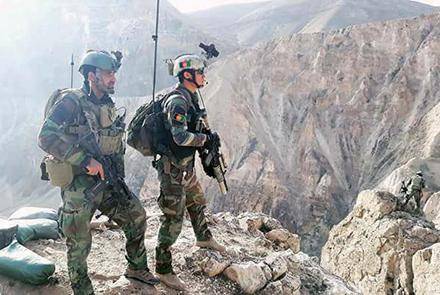Afghan Taliban control, influence at least 178 districts in Afghanistan: SIGAR
Shares

KABUL - SIGAR reported that the Afghan government controls 229 of 407 districts in the country, which is unchanged since last year.
The Special Investigator General for Afghanistan Reconstruction (SIGAR) has reported that the Taliban’s control of districts as of the end of January remains virtually unchanged.
According to SIGAR’s latest report, the Taliban continues to maintain its grip on half of Afghanistan, despite US military’s reinvigorated effort to force the group from its strongholds.
Accordingly, early 2018 has already seen an increase in the number of US air strikes conducted in Afghanistan.
The US air force dropped 378 munitions in January, 469 in February, and 339 in March 2018 during 215 missions.
The total of 1,186 munitions dropped in the first quarter of 2018 is the highest number recorded for this period since reporting began in 2013, and is over two and a half times the amount dropped in the first quarter of 2017.
According to the SIGAR report, the Afghan government controls or influences 229 of Afghanistan’s 407 districts (56.3 percent). The Taliban controls or influences 59 districts (14.5 percent). The remaining 119 districts (29.2 percent) are contested.
There is little change between this quarter and last, when a US military spokesman noted that “approximately 56 percent of the country’s 407 districts are under Afghan government control or influence, 30 percent remain contested, and approximately 14 percent are now under insurgent control or influence.”
The report also noted the record high security incidents in 2017.
The Secretary-General of the United Nations (UN) reported in late February that the security situation in Afghanistan remained highly unstable as conflict between government and insurgents continued throughout the country and high-profile attacks in urban centers increased.
The UN reported 23,744 security incidents during 2017, the most ever recorded, but only a negligible increase from 2016. Armed clashes continued to cause the most security incidents (63 percent of incidents), roughly on par with 2016, followed by improvised explosive devices (IEDs) and air strikes.
The UN said that the 950 air strikes recorded in 2017 represented a nearly 68 percent increase compared with the same period in 2016, though the US Air Force’s figure (4,361 strikes during 1,248 missions) is significantly higher. Notably, suicide attacks increased by 50 percent, and targeted killings and abductions increased by 6 percent compared with 2016.
The eastern and southern regions of Afghanistan continued to experience the highest number of security incidents in 2017, comprising 55 percent of the total.
